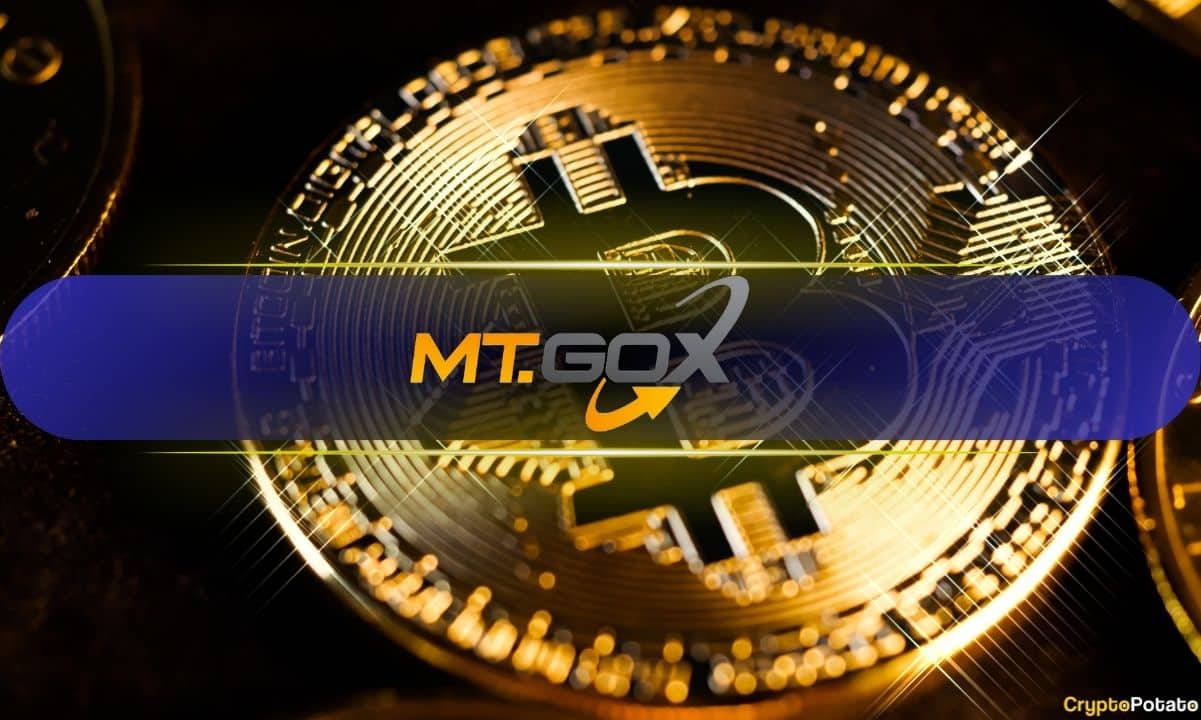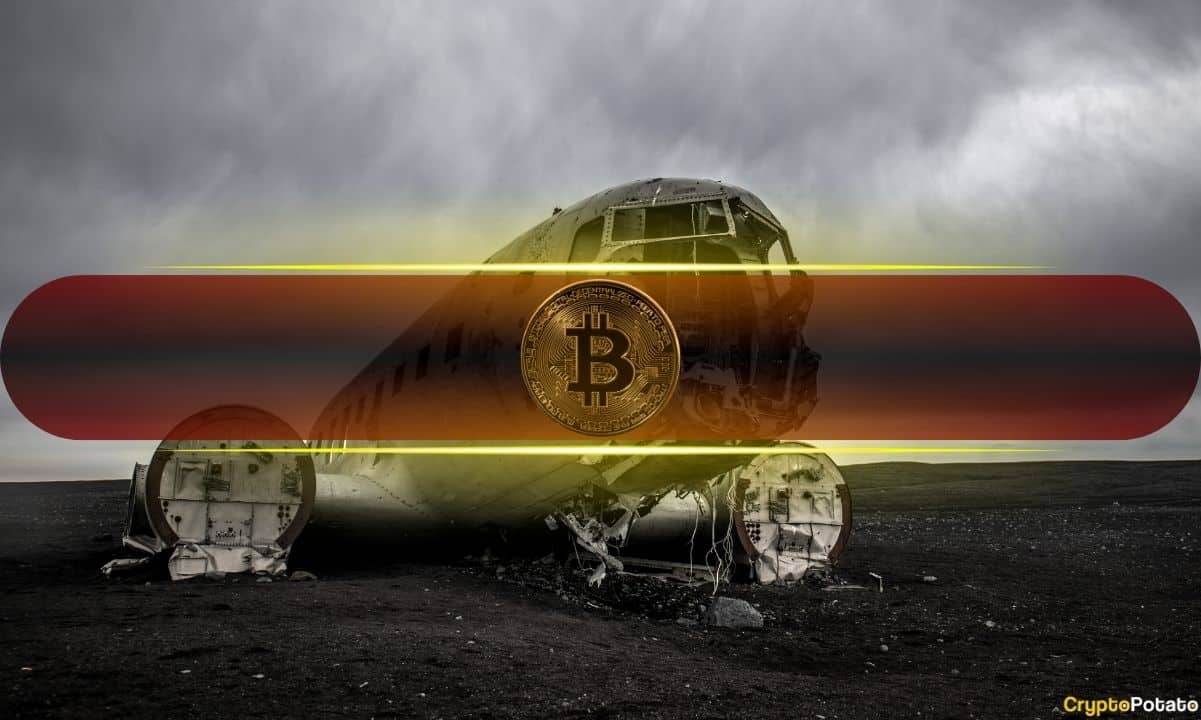Mt Gox Makes Another Billion-Dollar Bitcoin Move, More Payouts on the Way?

The defunct crypto exchange Mt Gox is at it again, moving thousands of bitcoins (BTC) from one wallet to another in what could be considered part of efforts to repay its creditors.
According to data from the on-chain intelligence firm Arkham, Mt Gox moved a total of 11,501 BTC worth $1.01 billion at the time from its cold wallet to a hot one and an unlabelled address. The defunct entity transferred 893 BTC ($78 million) to a hot wallet labeled 1Jbez, while 10,608 BTC ($927.5 million) was deposited in the unmarked address 1DcoA.
Another $1B BTC Transfer
It remains unclear if Mt Gox’s latest move is an internal reshuffling of assets or part of repayment efforts that could trigger significant selling activity in the short term as creditors offload their assets.
The move could be internal shuffling because the cold wallet that executed the transfers received about 11,502 BTC from a different Mt Gox address two weeks ago. Up until writing time, the 10,608 BTC was still unspent and sitting in the unmarked address, substantiating the likelihood of further internal transfers in the near term.
However, the 893 BTC in hot wallet 1Jbez had been sent to another receiving address labeled 1FodPL, which, in turn, moved the $78 million BTC to an address tied to the crypto exchange Kraken. By press time, the funds were still unspent in Kraken’s wallet.
With Mt Gox’s repayment deadline seven months away, the defunct entity could soon be moving more funds to designated exchanges. Recall that the Mt Gox trustee commenced creditor repayments in July 2024 but extended the deadline to October 31, 2025, due to a system error and incomplete procedures by creditors. As reported earlier, over 17,000 creditors have received their repayments, with more to be resolved soon.
Bitcoin Reacts
Since Mt Gox kicked off creditor repayments, almost every large transfer from wallets tied to the entity has triggered a decline in bitcoin’s price. This time was no exception. The cryptocurrency’s ascent was halted at just shy of $89,000 and pushed south to $86,500 before it recovered some ground to $87,000 as of press time.
With BTC already struggling amid negative market sentiment, the asset could witness more declines if Mt Gox continues to move its funds. Worse still, selling pressure from settled creditors could trigger even more dips in the coming weeks.
Meanwhile, according to Arkham data, Mt Gox still holds about 35,583 BTC, roughly $3.08 billion.
The post Mt Gox Makes Another Billion-Dollar Bitcoin Move, More Payouts on the Way? appeared first on CryptoPotato.
Read More

Bitcoin Price Crashes Below $80K in Anticipation of ‘Bloody’ Monday Open for Stock Markets
Hyperliquid Launches HyperCore and HyperEVM

Hyperliquid has officially connected HyperCore and HyperEVM on its mainnet, a move that signals its ambition to blend the performance of centralized exchanges with the composability of decentralized finance (DeFi). But what does this upgrade mean for developers, users, and the future of HYPE?
What Are HyperCore and HyperEVM?
HyperCore serves as the engine behind Hyperliquid’s high-performance layer-1 blockchain, optimized for speed and trading scalability. HyperEVM, introduced in February 2025, extends Ethereum Virtual Machine compatibility to the ecosystem, allowing developers to build traditional EVM-based decentralized applications (dApps) within the Hyperliquid infrastructure.
Until now, these systems ran in parallel. With mainnet linking, they can now communicate directly unlocking new cross-layer functionality.
Why Is This Integration a Big Deal?
The integration allows for seamless transfer of assets like Hyperliquid’s native token, HYPE, between HyperCore and HyperEVM. Builders can now leverage both the ultra-fast spot trading layer and the smart contract functionality of EVM dApps. This dual power could foster an ecosystem where:
- Spot traders and DeFi users coexist natively
- Developers can create hybrid dApps combining exchange-like speed and programmable logic
- Asset composability increases across layers without leaving the Hyperliquid network
This is an important step toward unifying DeFi with centralized exchange (CEX)-grade performance, something most projects only talk about.
How Does It Work for Developers?
Builders can use the "spotSend action" or the Hyperliquid frontend to convert assets across layers. On the EVM side, ERC-20 transfers are enabled, opening the door to more conventional DeFi applications.
However, the Hyperliquid team is urging caution. Since linking is immutable, developers are strongly advised to test asset transfers on testnet first. There are also no current validation systems for checking if a recipient contract is valid ERC-20, meaning mistakes could lead to asset loss.
This signals that while the tech is promising, development maturity is still in early phases.
How Has HYPE Token Reacted?
HYPE is currently down -3.86%, trading nearly 53% below its all-time high of $34.96 set in December 2024. While some might interpret the token's performance as a bearish signal, the current price dip could also be seen as a consolidation before a new phase of growth, especially as the ecosystem expands.
The airdrop of $1.2 billion worth of HYPE positioned the project among the most generous in DeFi history, attracting both retail attention and developer interest.
Will This Move Attract More Builders?
Very likely. The HyperCore–HyperEVM integration creates a unique playground for developers: they can build exchange-speed dApps with EVM flexibility — a combination rarely found in today’s fragmented DeFi landscape.
However, adoption will depend heavily on:
- How well the linking process works in real-world deployments
- Whether safety and auditing tools are improved
- Community response and third-party development support
If executed well, Hyperliquid could become a go-to platform for DeFi 2.0 builders.
What’s Next for Hyperliquid?
The project is at a pivotal point. With its perpetual DEX success, mainnet integration of core infrastructure, and a growing developer ecosystem, the roadmap likely includes:
- Ecosystem incentives to promote HyperEVM dApp development
- Enhanced tooling and safety mechanisms for linking
- Potential listing events or liquidity expansions
If these play out, HYPE could retest its all-time highs in the next market cycle, especially if DeFi sentiment strengthens.
Is Hyperliquid Building the Future of DeFi?
Hyperliquid’s approach combining CEX performance with DeFi composability offers a compelling vision for the future of decentralized trading. While the technology is still maturing, the foundation is solid and forward-looking.
Developers and early adopters willing to test, build, and contribute now may benefit greatly if the platform becomes a central player in the next phase of DeFi growth.


